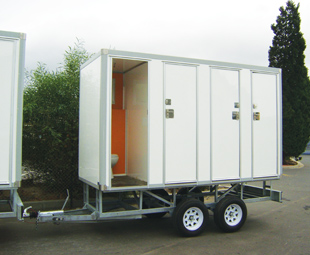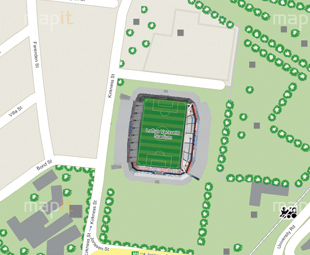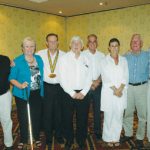Transport and the 2010 world cup

The countdown is on, with kick-off fast approaching. Yet local transporters remain confused, even apprehensive, about the impact of the FIFA World Cup on their day-to-day operations. FOCUS brings you the low-down on access sites, enclosures and everything else you need to know – but didn’t think to ask.
2010 and beyond
From the word go, hosting the 2010 FIFA World Cup has provided the South African government with an ideal opportunity to invest in local infrastructure. While, as a country, we needed to prepare ourselves to host the biggest sporting event in the world, any related investments also needed to fit the criteria for future sustainable development.
Transport has been no exception. As far as the Department of Transport (DoT) is concerned, the 2010 FIFA World Cup will have been a success if the accelerated transport investments secured in preparation for 2010 yield a lasting legacy of quality transport services, infrastructure and systems. According to the DoT, it is hoped that this legacy will be twofold: the services resulting from interventions made for the event itself, and the impressions with which the remainder of the world will be left after the event.
Transport services and infrastructure provided during the FIFA World Cup must therefore meet the efficiency, safety, quality and cost-effective requirements of the modern era; and they must be accessible to all – visitors and residents alike. Since transport will be one of the key factors upon which visitors will judge the success of the event, it is essential that it leaves a lasting positive impression on all end-users.
The South African government’s overall investment in World Cup-related projects is estimated to have been R28 billion. Of this, R13.6 billion – by far the largest slice of the investment pie – was earmarked for transport. However, projects commissioned specifically for the tournament will be in use well after it is over, having improved South Africa’s road, air and sporting/recreational infrastructure not only for 2010, but far beyond.
What should transporters expect?
• During match days, a radius of approximately three kilometres around the stadiums will be restricted for normal traffic. There will also be a number of fan parks and public viewing areas (PVAs) in operation at various locations, around which traffic delays and limited road restrictions can be expected. This will be applicable approximately three hours before, during and three hours after each game.
• No national roads will be closed or restricted as a result of any match activities. However, the ad hoc closure of specific national and feeder routes due to road incidents or for security reasons cannot be ruled out completely during the tournament. In the event of such incidents, provincial or local traffic management agencies will make alternative routes available.
• Increased traffic volume is expected on secondary roads as a result of tourists and teams travelling in coaches, buses and taxis. It must be noted that, in certain areas, road conditions on these secondary routes are not good.
• Normal import/export activities at South Africa’s ports are not expected to be affected by the World Cup, so it should be “business as usual”. Where applicable, rail transport will be rescheduled in line with Transnet Freight Rail (TFR), clients’ and host cities’ match schedules. Increased traffic volume is expected in the vicinity of all airports.
• Many matches will end at around 23:00, so late-night congestion will be a common occurrence on roads surrounding the venues concerned, related fan parks, PVAs and park-and-ride facilities. Because unofficial public gatherings/PVAs will occur, there may be more congestion in some areas. This is likely to increase the risk of encountering intoxicated drivers and pedestrians on our roads. Limited late-night goods transportation is therefore recommended.
• The possibility of a high number of road incidents remains a concern, so special precautions need to be implemented. One example is the monitoring of vehicles and drivers, which will need to be increased during this period to pre-empt unscheduled stops and participation in festivities while officially on duty, and the temptation to take inadequate rest periods.
• High traffic congestion is expected at border posts, which will affect the transit times of imports and exports by road. The safety and security risks implicit in long queues of vehicles are especially worrying for operators transporting dangerous goods, mainly because activities like cooking and lighting open fires in the vicinity of these vehicles tends to be the order of the day. There remains an under-supply of competent emergency services at most, if not all, border posts.
• The hijacking of heavy motor vehicles – especially those carrying dangerous goods – could increase during the tournament, with obvious implications for safety and security. It is therefore imperative to immediately report any hijacking (or attempted hijacking) to the nearest South African Police Services (SAPS) station.
Recommendations:
• Trip planning, journey management, driver awareness and driver pre-trip briefings will need to be stepped up in order to ensure that all risks and concerns are addressed.
• Product supply to clients will need to be planned well in advance, especially around match venues and dates. Deliveries in outlying areas should not be affected, although delays could occur as a result of traffic congestion.
Embargo zones
The world will be in the grip of football fever for a whole month, between kick-off on Friday 11 June to the final match on Sunday 11 July. Which is why South African businesses and transport operators will need to worry about more than who they’ve backed in their office pools! Game stadiums will be subject to specific rules and road closures, so it is important for operators to know which stadiums are hosting games and when; and how this is likely to affect their daily operations.
According to the Road Freight Association (RFA), although FIFA 2010 Soccer World Cup’s Local Organising Committee (LOC) has made assurances there will be no embargoes on traffic lanes, local authorities may decide otherwise. The RFA therefore recommends that operators minimise transport activities around venues on match days because localised delays will undoubtedly occur. Most road closures will be around the stadiums and on the demarcated main spectator routes to and from each event.
The DoT has also notified Business Unity South Africa (Busa) of all embargo dates that will restrict the movement of abnormal vehicles during the World Cup period, assuring Busa that traffic officials are aware of these dates and will enforce these measures by way of fines and/or impounding vehicles. Busa therefore strongly urges its members to adhere to these regulations.
EXCLUSIVE ZONES AND ROADS
Controlled Access Sites
 Innes Free Park (FIFA Fan Park)
Innes Free Park (FIFA Fan Park)
• Area bordered by Katherine Street and Grayston Drive
• Area bordered by Grayston Drive and M1 North off-ramp and M1 North on-ramp; portion of M1 passing along Innes Free Park.
Elka Stadium (FIFA Fan Park)
• Area bordered by Vundla Street
• Area bordered by Gumede Street
• Area bordered by Lefatola Street
Mary Fitzgerald Square (Artists of Africa)
• Area bordered by Bree Street at Henry Nxumalo and Miriam Makeba Streets
• Area bordered by Jeppe Street at Henry Nxumalo and Miriam Makeba Streets
Park Station (train station)
• Area bordered by Rissik Street at Wolmarans and De Villiers Streets
• Area bordered by Wanderers Street at Wolmarans and De Villiers Streets
Gautrain Station/FIFA accommodation venues
• Area bordered by West Street
• Area bordered by Rivonia Street
• Area bordered by Maude Street
• Area bordered by 5th Street
No. 3 Square Alexandra (Football for Hope)
• Area bordered by London Road at 12th Avenue and 13th Avenue
International Broadcasting Centre (IBC)
Included in exclusion zone at Soccer City
Exclusion Zones
Ellis Park Stadium
• Area bordered by Bertrams Road at Charlton Terrace and Voorhout Stree
• Area bordered by Simmert Street at Charlton Terrace and Voorhout Street
Soccer City Stadium and IBC
• Area bordered by Nasrec Road
• Area bordered by portion of Soweto Highway
• Area bordered by portion of Golden Highway
• Area bordered by Rand Show Road
“Nice” toilets for 2010 and beyond
In the grand scheme of things, ablutions are not what first come to mind when we think of the upcoming FIFA World Cup; yet toilets remain one of the biggest logistical challenges facing stadiums and fan parks around the country.
 Enter Serco Industries, one of South Africa’s premium truck body manufacturers, who is offering its services in another way this June. In fact, thanks to Serco, many of the portable toilets at 2010 World Cup stadiums around South Africa will have an upmarket look!
Enter Serco Industries, one of South Africa’s premium truck body manufacturers, who is offering its services in another way this June. In fact, thanks to Serco, many of the portable toilets at 2010 World Cup stadiums around South Africa will have an upmarket look!
Serco Industries in Cape Town recently completed 20 mobile ablution units for the Nice Equipment Company, to be used extensively at grounds hosting 2010 World Cup soccer matches in June and July. This order is in addition to the 100 ablution units Serco has already manufactured for Nice Equipment over the past few years.
Trailer chassis for the units are delivered to Serco, where each is fitted with an upper structure including partitions, windows and hatches. The use of fiberglass ensures that the ablutions are corrosion resistant and easy to clean. Nice Equipment then installs sanitary ware to complete its product. While, previously, the toilets were unisex, the most recent 20 units are larger and fitted with separate compartments for women and men.
According to Nice Equipment Company’s managing director, Allan Searle, some of the new ablution units have been hired out for use at hospitality centres at various 2010 stadiums around the country. “We have a large fleet of the toilets, so they will also be seen at fan parks in operation during the tournament,” he adds. “They have been built for use by the hospitality industry so that, when the World Cup is over, they can be used at various outdoor events.”
Nowadays, event organisers are well aware that guests prefer to have an aesthetically pleasing, spacious and hygienic ablution facility, which these units provide. This is fundamental to delivering a professionally managed event.
Are you covered?
As the count-down to kick-off continues, the buzz around the upcoming 2010 FIFA World Cup has been steadily increasing. But while the excitement is absolutely justified, there are serious matters surrounding the event as well. Passenger-carrying bus operators and commercial transport operators, in particular, need to be aware of potential liabilities during this period.
 According to Glenrand M.I.B brokers, bus operators need to adopt a pre-emptive approach towards World Cup-related passenger liabilities rather than rely completely on recent changes to the Road Accident Fund (RAF) legislation which, in any event, may still be subject to review.
According to Glenrand M.I.B brokers, bus operators need to adopt a pre-emptive approach towards World Cup-related passenger liabilities rather than rely completely on recent changes to the Road Accident Fund (RAF) legislation which, in any event, may still be subject to review.
These changes, introduced last year, mean that claims on the RAF are likely to be severely curtailed. Maintaining a solid presence in South Africa’s bus transport industry in general, with about a 35% share of the market’s insurance business, Glenrand M.I.B speaks with some authority on the matter. Its commercial transport product is bundled under the banner of “Isithuthi”, which means vessel or carrier used to transport people or commodities.
“It’s clear that bus operators need to be certain that their passenger liability cover is adequate for the World Cup and, of course, beyond,” says Andre du Sart, manager, commercial product solutions at Glenrand M.I.B.
According to Du Sart, in its previous form the RAF provided unlimited liability – except in the case of passengers in vehicles with a cap of R25 000 per person – where fault could be proved on the part of the driver/owner of a vehicle, causing bodily injury or death (although not property damage) to other parties as a result of negligent driving.
“In terms of the recent amendments, cover continues to be applicable where there is negligence on a ‘no fault basis’, so cover within certain parameters is automatic,” he explains. “However, claims for loss of income or support are now limited to R160 000 per year as opposed to unlimited cover previously.
“In addition, under the changed legislation, claims for what is known as non-pecuniary loss or general damages – for example, pain and suffering – are only payable in respect of ‘serious injury’ and then only as a lump sum.”
Du Sart goes on to explain that injuries must be assessed by a medical practitioner, and that this assessment must be done according to a prescribed method based on more than 30% impairment of the “whole person”, serious long term impairment or loss of bodily function, permanent serious disfigurement and so on.
“There are other contentious issues in the RAF legislation changes, including the fact that common law rights to sue a negligent party for injuries arising out of the driving of a vehicle are excluded,” he continues.
“These limitations apply to South African passengers as well, but with the World Cup looming, liabilities in respect of overseas passengers are in the spotlight and bus operators would be well advised to assess their cover, particularly when considering that overseas visitors will see the scope of a claim in the context of their own currency.
“Accordingly, bus operators need to be wary of the gaps in their cover and consider private ‘top-up’ cover for injuries, disabilities and loss of income to passengers. It’s also noteworthy that – whilst, currently, a driver who causes an accident resulting in injury is not at risk of a claim being brought against him personally – a successful action would mean that the driver could, in fact, be sued for damages notwithstanding the fact that, at the time of the negligence, the law did not recognise such claims.
“It’s therefore of the utmost importance to retain adequate and generous levels of liability insurance for personal injuries to third parties, until such time as the validity of the recent RAF amendments is resolved,” Du Sart concludes.
The right Map for the job
Thanks to MapIT, to help them overcome the myriad of logistical challenges associated with the 2010 FIFA World Cup, soccer fans and officials will have access to a special soccer edition map set based on the most detailed mapping data on South Africa available.
 Maps and data supplied by South African digital mapping company, MapIT – in conjunction with its international shareholder, Tele Atlas – will contain all the logistical detail needed to navigate the upcoming event. This will include information on road closures around major matches, stadium entrance gates, fan park points and drop-off areas, as well as 3-D displays of key landmarks in the nine host cities. Emergency services, vehicle tracking organisations and fleet managers will have access to identical information, which will soon be available on the web as well as on personal navigation and mobile devices.
Maps and data supplied by South African digital mapping company, MapIT – in conjunction with its international shareholder, Tele Atlas – will contain all the logistical detail needed to navigate the upcoming event. This will include information on road closures around major matches, stadium entrance gates, fan park points and drop-off areas, as well as 3-D displays of key landmarks in the nine host cities. Emergency services, vehicle tracking organisations and fleet managers will have access to identical information, which will soon be available on the web as well as on personal navigation and mobile devices.
In addition, Tele Atlas will give information technology (IT) developers access to free API (application programming interface) features that will allow them to create special custom-designed programmes for mobile and web applications. “Our mapping for the World Cup covers not only the latest street level changes and new access ramps, but also the geometry around existing and new stadiums and walkways. It is designed for people on the move,” says MapIT managing director, Ray Wilkinson.
The 3-D display of more than 50 landmarks including Loftus Versveld, Coca Cola Park (Ellis Park) and Soccer City is a powerful and innovative new tool. “These images offer users more realistic orientation and route guidance in a strange environment,” says Wilkinson. “Users can literally identify key points as they approach them.”
Says general manager, Tele Atlas South Africa, Danny Grobben: “The special map release allows our navigation and local search partners to deliver solutions for an enjoyable, hassle-free World Cup experience. With Tele Atlas content as the foundation, mobile and in-car navigation products will help commuters and transport operators avoid temporary road closures, find the best walking route to stadiums and see just where they are using Tele Atlas 3D landmarks or detailed Tele Atlas 2D city maps. Our products include speech recognition technologies on navigation devices and provide better voice output.”
The special version of the company’s MultiNet map database includes all roads in South Africa, Lesotho and Swaziland, as well as accurate coverage of the nine host cities in South Africa. The map will allow fans to locate restaurants, hotels and bars, as well as the fastest routes around regulated traffic zones near event locations.
“To help developers create applications in time for the event, Tele Atlas plans to offer special World Cup APIs. Using these standard web interfaces, they can access the freshest maps and most dynamic content to create and deliver navigation and local search applications for the World Cup. With our APIs, developers can build the best applications that will help their web and mobile end-users find whatever they need during the competition,” says Mandali Khalesi, product manager at Tele Atlas.
This special version of Tele Atlas’ MultiNet map database includes 675 160 km of road in South Africa, Lesotho and Swaziland, 228 152 “points of interest”, street names and road safety information, speed restrictions, signposts and lane information.
“Business and industry depend on the accuracy of our map data,” says Wilkinson. “With this latest map release, we are confident that we are offering the gold standard in mapping that we promised and set out to deliver when we first pioneered mapping in this country nearly eight years ago.”
Published by
Focus on Transport
focusmagsa




